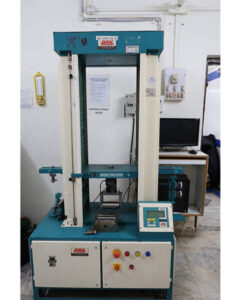Color matching in rubber compounds. How to Control Color Matching Problems in Rubber Compounds:
A Comprehensive Guide

Color matching in rubber compounds plays a critical role in the footwear, automotive, and industrial sectors. Achieving consistent and accurate colors can be challenging due to variations in raw materials, processing methods, and environmental conditions.
Color matching in rubber compounds
This article provides a detailed guide on how to control color matching issues in rubber compounds and optimize production processes.
Why Color Matching Matters in Rubber Compounds
Accurate color matching in rubber compounds is essential for:
- Maintaining brand identity
- Meeting customer specifications
- Enhancing product appeal
- Ensuring quality standards
Color inconsistencies can lead to product rejections, increased production costs, and damage to brand reputation.
Common Causes of Color Matching Problems
1. Variability in Raw Materials: Differences in pigment, filler, and rubber properties can affect the final color.
2. Processing Conditions: Temperature, mixing speed, and pressure variations can impact color uniformity.
3. Pigment Dispersion: Poor dispersion of color pigments leads to uneven coloring.
4. Chemical Reactions: Interactions between pigments and other chemicals in the rubber compound can cause color shifts.
5. Environmental Factors: Exposure to heat, light, and humidity during production or storage can alter the color.
Effective Methods to Control Color Matching Problems
1. Select High-Quality Pigments
Use high-grade, stable pigments specifically designed for rubber compounding.
Choose pigments that are resistant to heat and light exposure.
Ensure that the pigments do not chemically react with other ingredients in the compound.
2. Proper Dispersion Techniques
Use advanced mixing equipment such as Banbury mixers or twin-screw extruders.
Ensure optimal mixing time and speed to achieve uniform pigment dispersion.
Conduct regular tests to check pigment dispersion levels.
3. Optimize Mixing Process
Maintain consistent mixing temperatures and speeds.
Use process monitoring systems to detect and correct variations in real time.
Train operators to follow standard operating procedures (SOPs) for color-critical compounds.
4. Use Color Masterbatches
Incorporate pre-dispersed color masterbatches for better color consistency.
Masterbatches reduce the risk of uneven color dispersion compared to direct pigment addition.
5. Maintain Consistency in Raw Materials
Source raw materials from reliable suppliers.
Implement strict quality control checks for incoming raw materials.
Standardize material batches to minimize variations.
6. Monitor Environmental Conditions
Control ambient temperature and humidity in the production area.
Use UV-resistant pigments if the compound is exposed to sunlight.
Store materials and finished products in controlled environments.
7. Conduct Spectrophotometer Analysis
Use spectrophotometers to measure and analyze color accuracy.
Compare results with standard color references.
Maintain a database of acceptable color standards.
8. Implement Quality Control Procedures
Conduct regular visual inspections by trained personnel.
Implement a color approval process for new batches.
Use statistical process control (SPC) tools to track color variations.
9. Regular Calibration of Equipment
Calibrate mixing and testing equipment regularly.
Ensure that spectrophotometers and other color-measuring devices are accurately calibrated.
10. Conduct Root Cause Analysis
Investigate and identify the root cause of color mismatches.
Implement corrective actions to prevent recurrence.
Document lessons learned for future reference.
Benefits of Effective Color Matching Control
- Enhanced product quality
- Improved customer satisfaction
- Reduced production costs
- Minimized product rejections
- Stronger brand reputation
Primary Search:
- 1. Color matching in rubber compounds
- 2. Rubber compound color control
- 3. Pigment dispersion in rubber
- 4. Rubber color consistency
- 5. Rubber compounding techniques
Secondary Search:
- 1. Color masterbatch for rubber
- 2. Spectrophotometer for color testing
- 3. Raw material quality in rubber compounds
- 4. Rubber production color issues
- 5. Mixing process for rubber compounding
Long-Tail Search:
1. How to control color matching problems in rubber compounds
2. Best methods for color matching in rubber manufacturing
3. Pigment dispersion techniques for rubber compounds
4. Improving color consistency in rubber products
5. Spectrophotometer use in rubber manufacturing
FAQs about Color matching in rubber compounds
Q1. Why is pigment dispersion important in rubber compounding?
A: Proper pigment dispersion ensures uniform color distribution throughout the rubber compound, reducing the risk of color inconsistencies.
Q2. How does temperature affect color matching in rubber compounds?
A: High or fluctuating temperatures can cause pigment degradation or chemical reactions, leading to color variations.
Q3. What is a color masterbatch, and how does it help in color matching?
A: A color masterbatch is a pre-dispersed mixture of pigments and additives. It improves color consistency and simplifies the compounding process.
Q4. How can I test color accuracy in rubber compounds?
A: Use a spectrophotometer to measure and compare the color of the compound against standard color references.
Q5. Can environmental factors affect the color of rubber compounds?
A: Yes, exposure to heat, light, and humidity can cause color changes in rubber compounds.
Conclusion
Achieving accurate and consistent color matching in rubber compounds requires a combination of high-quality raw materials, optimized processing techniques, and robust quality control measures. By following the strategies outlined in this guide, manufacturers can minimize color mismatches, improve product quality, and meet customer expectations. Prioritizing color consistency not only enhances product appeal but also strengthens brand reputation in the competitive market. Color matching in rubber compounds.





